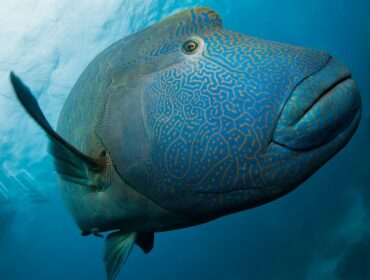A member of the perciform family of marine fish, stargazers include the Northern, Southern, Speckled and Mask species. Inhabiting shallow and deep tropical and temperate salt water, they have been found in diverse locations, such as the U.S., Canada, Indonesia, Fiji, and the Red Sea. The fish’s name is derived from its top-mounted eyes that peer skyward.
Stargazers have flat heads, vertically slanted mouths, and tapered bodies. They range in size from 7 to 35 inches in length and can weigh as much as 20 pounds. Lacking scales on their heads, they are silver or pale in color with various markings covering their bodies, such as spots or stripes. While most species of fish use their mouths, stargazers bring water in through their nostrils to breathe. They have four dorsal and 13 anal spines. The fish has two large venomous spines behind their ears and above their pectoral fins. Although they do not possess specialized electroreceptors, two sub-species, the Astroscopus and Uranoscopus, are bioelectrogenic fish. Astroscopus can emit an electric shock of up to 50 volts released from an organ developed from modified eye muscles. The Uranoscopus transmits electricity through a sonic muscle. The electric charge is used to ward off predators, so be careful when handling a specimen.
Living a largely solitary existence, Stargazers can disappear within a matter of seconds by using their pectoral fins like shovels to bury themselves in bottom sand or reef flats. They lie in wait for their next meal with only their eyes and mouth protruding. The fish will lunge upwards to ambush its prey as it passes overhead. They feed primarily on invertebrates and other bottom-dwelling fish. Some species have a worm-like lure protruding from the floor of their mouths, which is used to attract the attention of prey. The unsuspecting animal is then enticed directly over the camouflaged predator. Flanges on the edges of the fish’s upturned mouth prevent the inhalation of sand. While little is known about the mating habits of male and female stargazers, the fish lay their eggs in shallow water during the spring and summer.
Check out this cool video clip (but don’t try this at home) demonstrating the amazing cloaking skills of the stargazer and what awaits anything edible that crosses its path.





